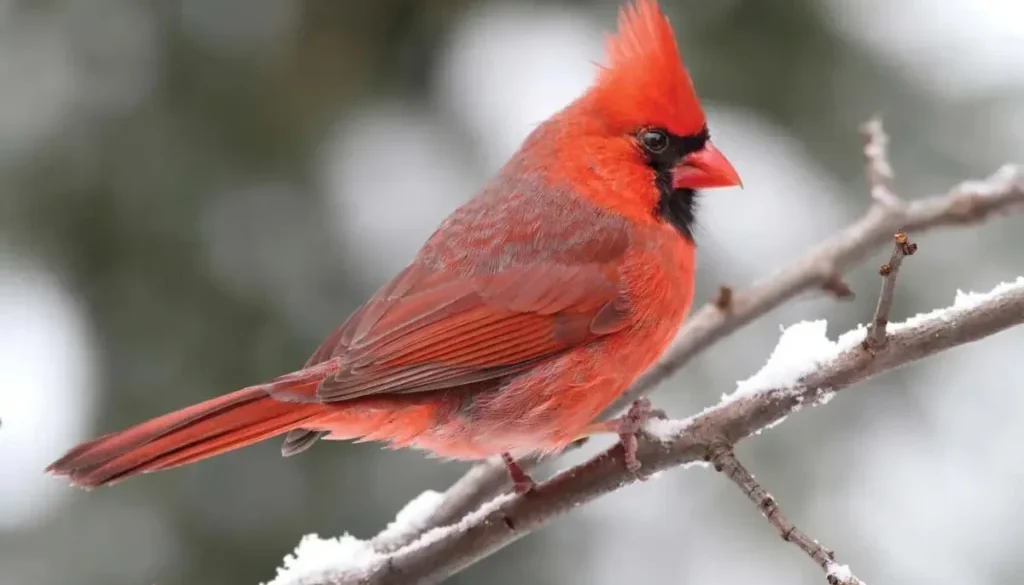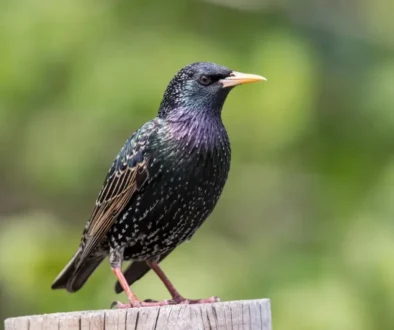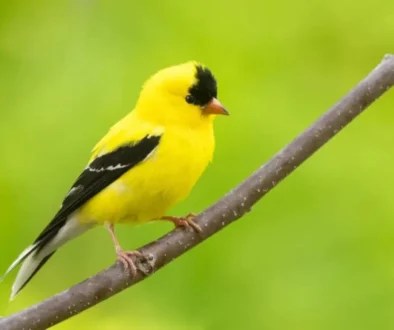Northern Cardinal (Cardinalis cardinalis)
A Vibrant Symbol of the American Southeast
The Northern Cardinal is one of the most recognizable and beloved birds in North America, particularly in the southeastern United States. Known for its striking red plumage, this bird has become a symbol of warmth and vitality, often associated with the beauty of winter landscapes when its bright colors stand out against the snow.
Physical Characteristics
Male Northern Cardinals are renowned for their brilliant red feathers, which cover their entire body except for the black mask around their face that extends from their eyes to their throat. Females, while not as vividly colored, are equally beautiful with their warm brown tones tinged with red on the wings, tail, and crest. Both sexes have a distinctive crest on their heads and a thick, conical bill that is perfect for cracking seeds. Cardinals are medium-sized songbirds, measuring about 8 to 9 inches in length with a wingspan of 10 to 12 inches.
Habitat and Range
Northern Cardinals are non-migratory birds that can be found throughout the eastern and central United States, as well as in parts of southern Canada and Mexico. They prefer habitats with dense shrubbery, such as forests, woodlands, gardens, and suburban areas where they can easily find food and shelter. Their adaptability to human environments has made them a common sight in backyards across their range.
Diet and Feeding Behavior
Cardinals primarily feed on seeds, grains, and fruits, but they also consume insects, particularly during the breeding season when they need extra protein for raising their young. Their strong beaks are well-suited for cracking open hard seeds, such as sunflower seeds, which are a favorite in backyard feeders. Cardinals are ground feeders and are often seen foraging on the ground near shrubs or under bird feeders.
Breeding and Nesting
The breeding season for Northern Cardinals begins in early spring and can last through late summer, allowing them to raise multiple broods in a single year. During courtship, males perform a variety of displays, including singing and feeding the female. Cardinals are known for their strong pair bonds and often mate for life. The female builds a cup-shaped nest in dense foliage, where she lays 2 to 5 eggs. Both parents take part in feeding the chicks, which fledge about 10 days after hatching.
Vocalization and Communication
Northern Cardinals are vocal birds with a rich repertoire of songs and calls. Males are particularly known for their clear, whistling songs, which are used to establish territory and attract mates. Both sexes also use a variety of calls to communicate, including a distinctive chip note that serves as an alarm signal. Cardinals are unique among songbirds in that both males and females sing, although the male’s song is usually more elaborate.
Cultural Significance and Conservation
The Northern Cardinal holds a special place in American culture and is the state bird of seven states. It is a popular subject in art and literature and is often seen as a symbol of joy, hope, and resilience. Despite being a common bird, the Northern Cardinal faces threats from habitat loss and climate change. However, it is currently listed as a species of least concern, thanks to its adaptability and widespread presence across its range.




